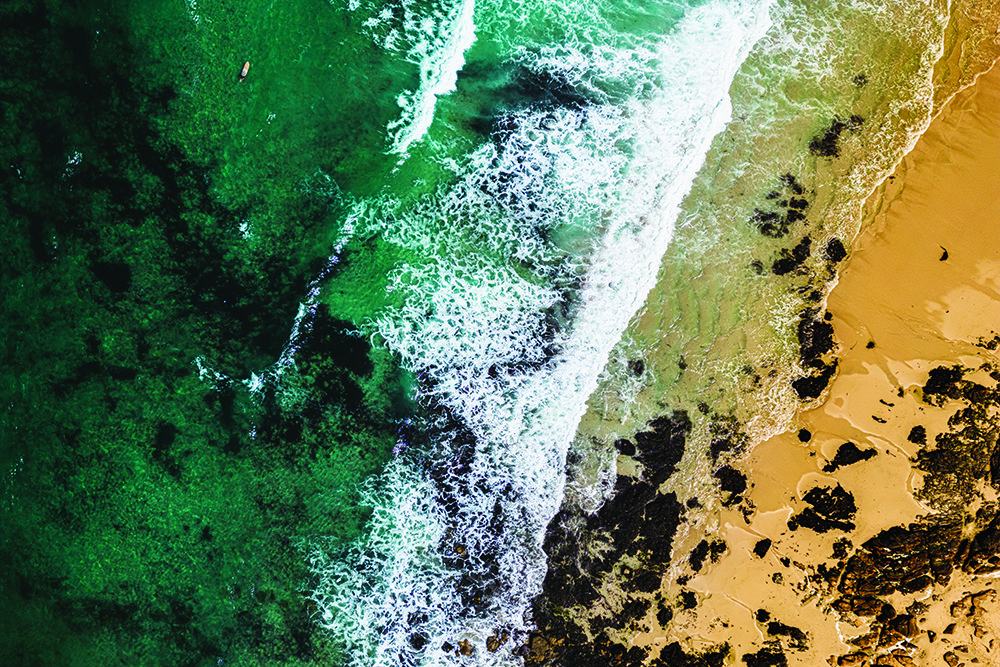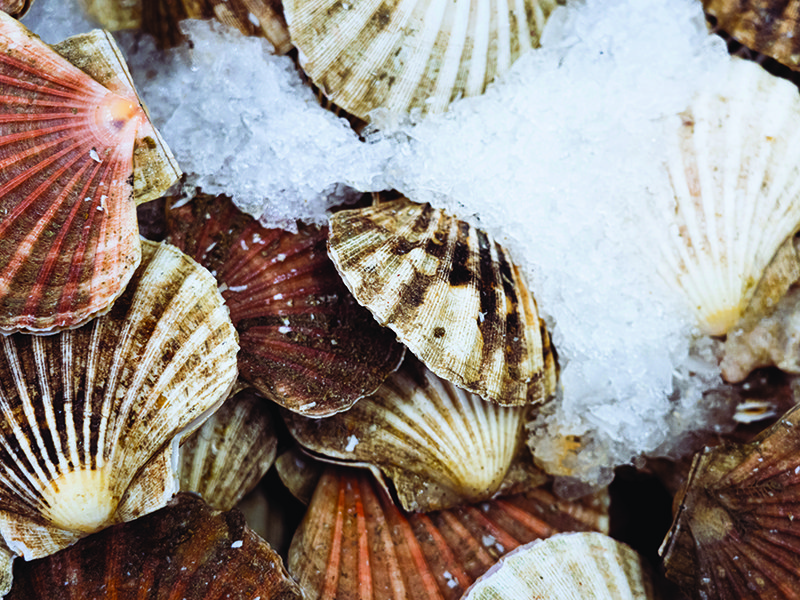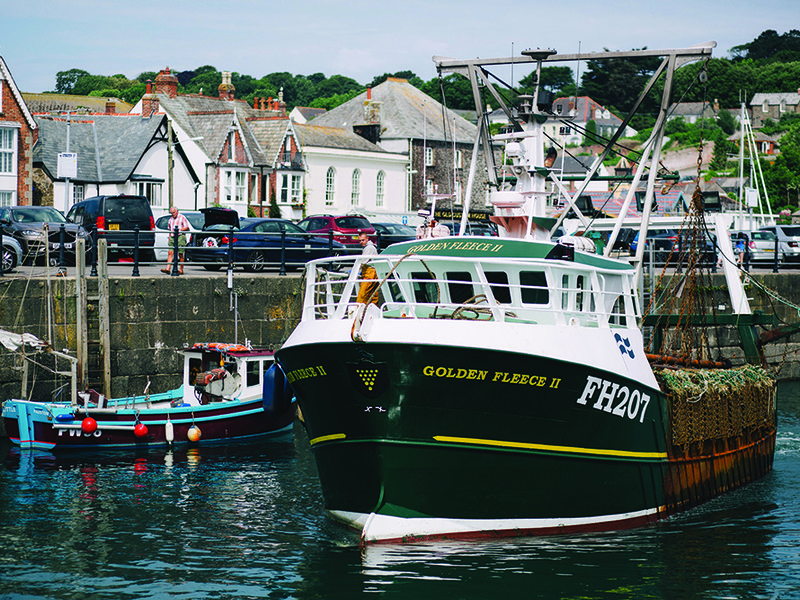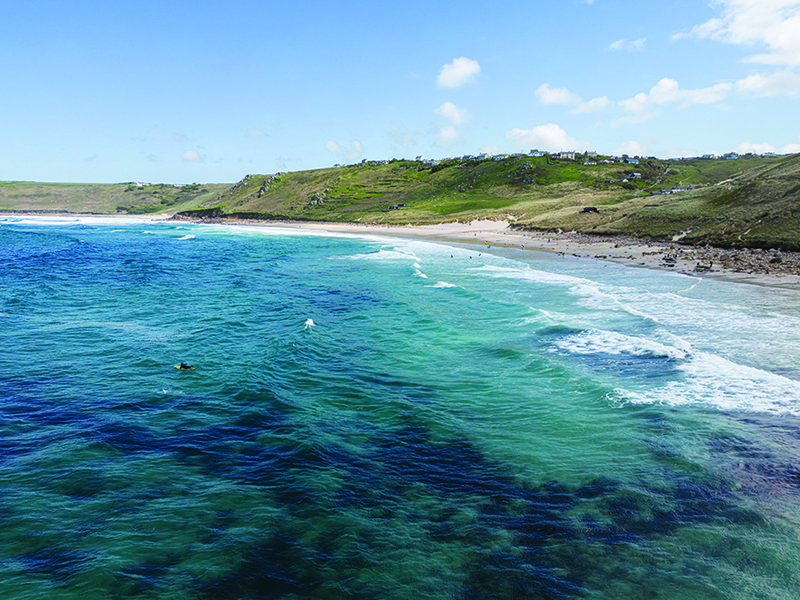The raucous call of seagulls is as constant as the waves crashing onto Cornwall’s scenic beaches. This historic county, the westernmost part of the Southwest Peninsula of Great Britain, is home to quaint coastal villages, wild moors, wooded valleys and pastoral landscapes. It’s a well-known holiday destination in modern times but it rose to prominence for its fishing industry as far back as the 16th century. Today, fishing remains one of the pillars of Cornwall’s economy as is evident from local events celebrating it, such as the Falmouth Oyster Festival and Newlyn Fish Festival.
The mixing of warm and cold currents off the coast of Cornwall brings in an astonishing diversity of fish, shellfish and crustaceans. “Cornwall has some of the best fishing grounds in Europe, with crystal-clear waters,” says Edwin Hosking, a proud Cornishman who grew up in Newlyn and has been involved in the fishing community for over 43 years. “We manage our stocks incredibly well, which is why we see boats from other parts of Europe coming to fish in the Southwest of Cornwall.”
Edwin works as a procurement manager for Falfish, a Cornish family business founded by Ian Greet in 1979. What started as a small enterprise working with pelagic mackerel boats fishing in Falmouth Bay has grown into a multi-species seafood processor handling 60 species of fish every day. Today, Falfish not only supplies domestic markets in the UK but also export markets.
Traditional fishing auctions, where buyers would walk around ports to view the day’s catch and bid on them, no longer exist in Southwest Cornwall. “There’s no need to be physically present at the market thanks to modern technology. Everything has been digitalised,” explains Edwin. “At 4.30am, I start compiling the lists we receive from different ports before passing them on to the person who handles pricing. Once the prices are finalised, I along with the other buyers attend the digital auction, which starts at 6.00am.”
Edwin points out that Falfish doesn’t rely only on auctions to source fish. They’ve nurtured long-standing relationships with several fishermen in the area who stay loyal to them. “We’ve seen so many of them mature from boys into hardworking men, so we must be doing something right.”
The company works with approximately 100 vessels that land fish solely for them. These landing sites, in Falmouth, Newlyn, Plymouth and Brixham, are the core ports even though Cornwall has over 300 ports landing fish daily. “Once the fish is landed, we send our own trucks to pick up the catch and bring them back to our factory in Redruth, where we have approximately 150 full-time staff. Every item, except for one, is hand-cut and prepared by them. We don’t use machinery for these jobs because having an individual assessing the quality of each item helps us maintain our exacting standards,” explains George Marley, trading manager at Falfish.
Spinneys sources monkfish, lemon sole, Dover sole and scallops from Falfish. George adds, “Monkfish tail is considered a prime cut and it is hand-trimmed in our factory. We also work with Dover sole, a high-end species recognised as one of the best fish to eat throughout the UK. The scallops are hand-shucked and hand-prepared to ensure the best-quality meat reaches Spinneys.”
Falfish values the importance of these bountiful coastal waters and the role they have played in Cornwall’s history and culture. To ensure the longevity of fishing stocks, Falfish adheres to sustainable policies, which restricts it to a limited number of species. Moreover, the fishing boats that land fish for them have guidelines in place to ensure they catch fish that have already had a chance to reproduce.
“They do this by working closely with fishing scientists,” explains George. “They collect data which gives scientists a clear indication of the health of the fisheries.” This close association means fishermen have a chance to change
their gear and fishing techniques to minimise damage to fish populations. According to George, several sustainability initiatives have been put in place by Cornish fishermen themselves to ensure future generations of fishermen have stocks to go after.
“In the Southwest, they collaborated with scientists on Project 50%, which changed mesh design and size on fishing vessels to reduce
the number of unwanted species in the catch. This also resulted in nets snaring fewer items from the seabed, such as rocks or starfish, which would damage the catch. Thus, the quality of the daily catch improved significantly. We then benefit from it and pass that quality on to our customers,” says George.










